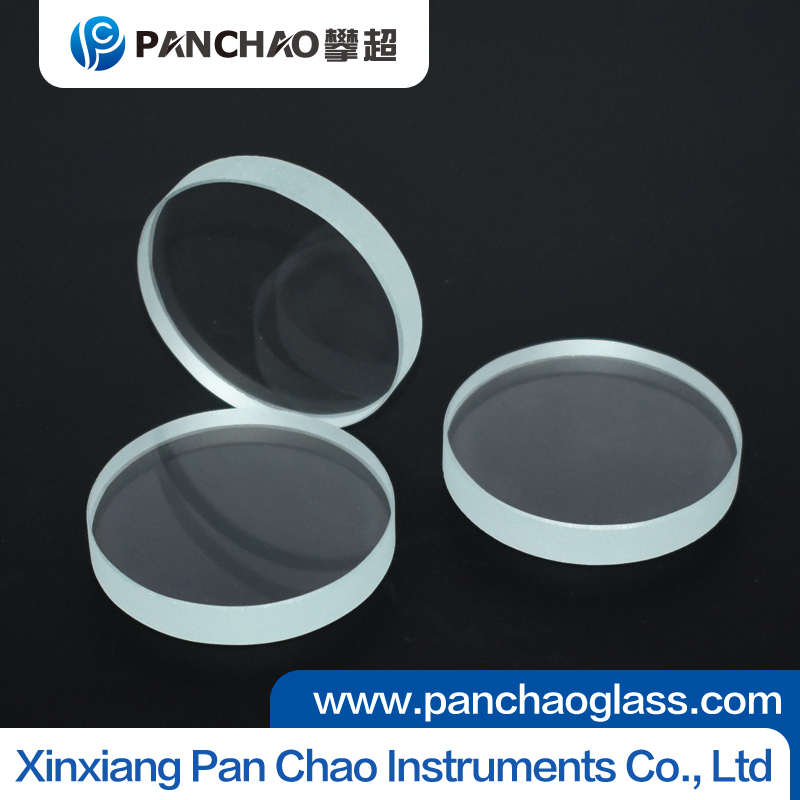Chemical composition and composition of borosilicate sight glass
Click:
-Time:2017-10-17 09:27

High-borosilicate sight glass is a special glass material with low expansion rate, high temperature resistance, high strength, high hardness, high light transmittance and high chemical stability. Compared with the universal glass, the non-toxic side effect, its mechanical properties, Thermal stability, water resistance, alkali, acid and other properties greatly improved, can be widely used in chemical, aerospace, military, family, hospitals and other fields. Xiamen Yiwei special is the domestic high-quality borosilicate material manufacturers, products are borosilicate glass mirror, glass, such as glass mirror. The melting part of the float glass melting furnace is the part where the melt of the batch is melted and the liquid is clarified and homogenized. The melting section is composed of the melting zone and the refining zone before and after the upper and lower part. In addition to quartz, sodium carbonate, calcium carbonate and the use of conventional glass, boron is used for the production of borosilicate glass.
So what is the chemical composition of the borosilicate sight glass? Typically, the resulting glass component is about 70% of silica, 10% of boron oxide, 8% of sodium oxide, 8% of potassium oxide, and 1% of calcium oxide (lime). Although it is a bit more difficult to make than traditional glass. The upper part of the space is also known as the flame space, from the front face wall, glass surface, kiln top of the arch and the kiln wall surrounded by the wall filled with flame; lower pool kiln by the bottom of the pool and the composition of the wall. Climbing boron mirror glass widely used, that is, the function of the melting zone is the compound at high temperatures by physical and chemical reaction to form a glass, and the clarification of the function is to make the formation of glass bubbles quickly discharged, To achieve the required quality of glass production.
If you are interested in the borosilicate sight glass or need to consult, please click on our online customer service, or call us. Pan Chao, customized different quality specifications of the glass.
The results show that the linear expansion coefficient of the boron-doped sight glass is 2.0 ± 0.1 × 10-6 / K, which is composed of sodium oxide (Na2O), oxidation Boron (B2O2), silica (SIO2) as a basic component of a glass. The glass composition of boron silicon content is higher, respectively, boron: 12.5 ~ 13.5%, silicon: 78 ~ 80%, so that such glass is high borosilicate glass
Boron oxide can form glass with many oxides and fluorides that can not form glass. It is possible to adjust the performance in a wide range according to the needs such as ultra-high refractive index, low dispersion, special dispersion of optical glass, ultra-high thermal expansion coefficient of electric vacuum sealing glass, radiometer, measuring instrument glass, radiation glass, Made of salt glass.
Boron-like sight glass bubbles in the glass is a visible gas inclusions, it not only affects the appearance of the glass quality, more importantly, the impact of glass transparency and mechanical strength, is a very easy to attract attention to the glass defects. There are many reasons for the bubble, the situation is complicated. The bubbles associated with melting, regenerated air bubbles (reboiling bubbles), air bubbles from outside, refractory bubbles, and bubbles caused by metallic iron are not discussed in this article. Here only the float glass in the forming process of the bubble defects to be discussed. The bubbles associated with the forming can be divided into the upper surface bubbles and the lower surface bubbles.
Pan Chao special industrial glass, tailored for your different quality of the glass.
Welcome sending your inquiry: Phone : +86 13569413718 Email: info@panchaoglass.com
Related articles
- Characteristics and Precautions of Sight Glass
- What is Sight Glass
- Small knowledge of sight glass
- High temperature boiler sight glass for boiler
Recommend
- Introduction to Borosilicate Glass
- High Temperature Resistant Glass: protecting world under extr
- High Temperature Resistant Glass: protecting world under extr
- High Temperature Resistant Glass: protecting world under extr
- What is optical glass
- Development history of aluminum silicon glass
- The best transparent polymer glass
- Classification of glass tube mirrors
- What is a mirror glass
- What is high-temperature glass
Rank
- Application of high temperature resistant glass
- Precautions in the process of quartz tube cutting and picklin
- Introduction to Borosilicate Glass
- The difference between high borosilicate glass, medium borosi
- High Temperature Resistant Glass: protecting world under extr
- High Temperature Resistant Glass: protecting world under extr
- High Temperature Resistant Glass: protecting world under extr
- What Glass Has the Highest Temperature Resistance
- What are the advantages and disadvantages of quartz tube heat
- Comparison Between LOW-E Glass and Ordinary Insulating Glass
Latest articles
- Introduction to Borosilicate Glass
- High Temperature Resistant Glass: protecting world under extr
- High Temperature Resistant Glass: protecting world under extr
- High Temperature Resistant Glass: protecting world under extr
- What is optical glass
- Development history of aluminum silicon glass
- The best transparent polymer glass
- Classification of glass tube mirrors
- What is a mirror glass
- What is high-temperature glass

